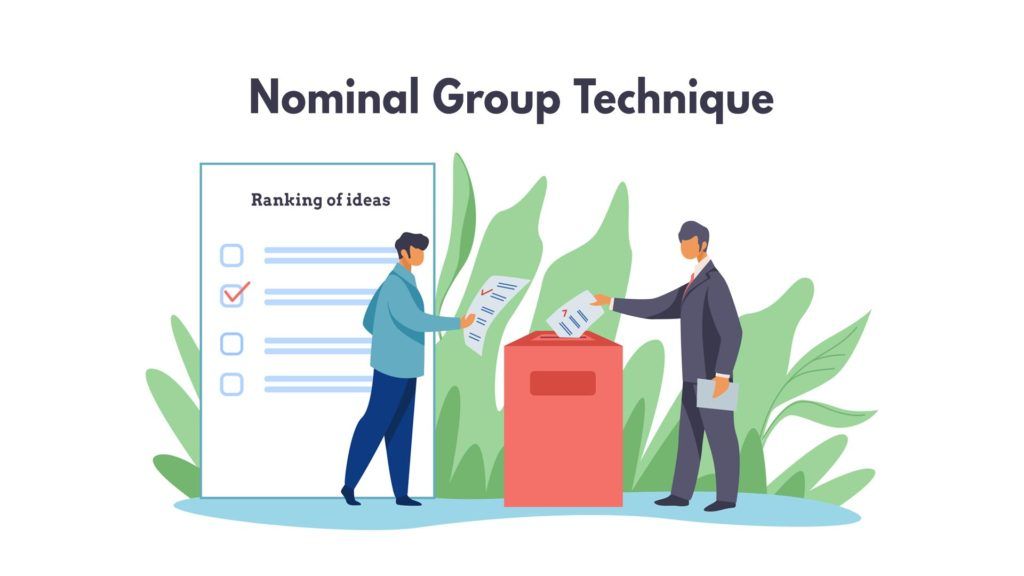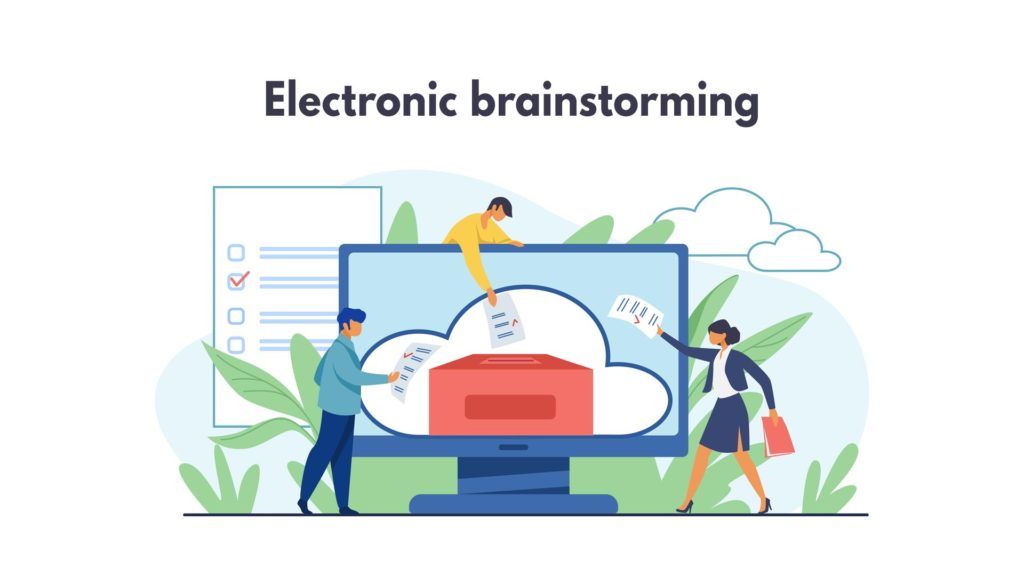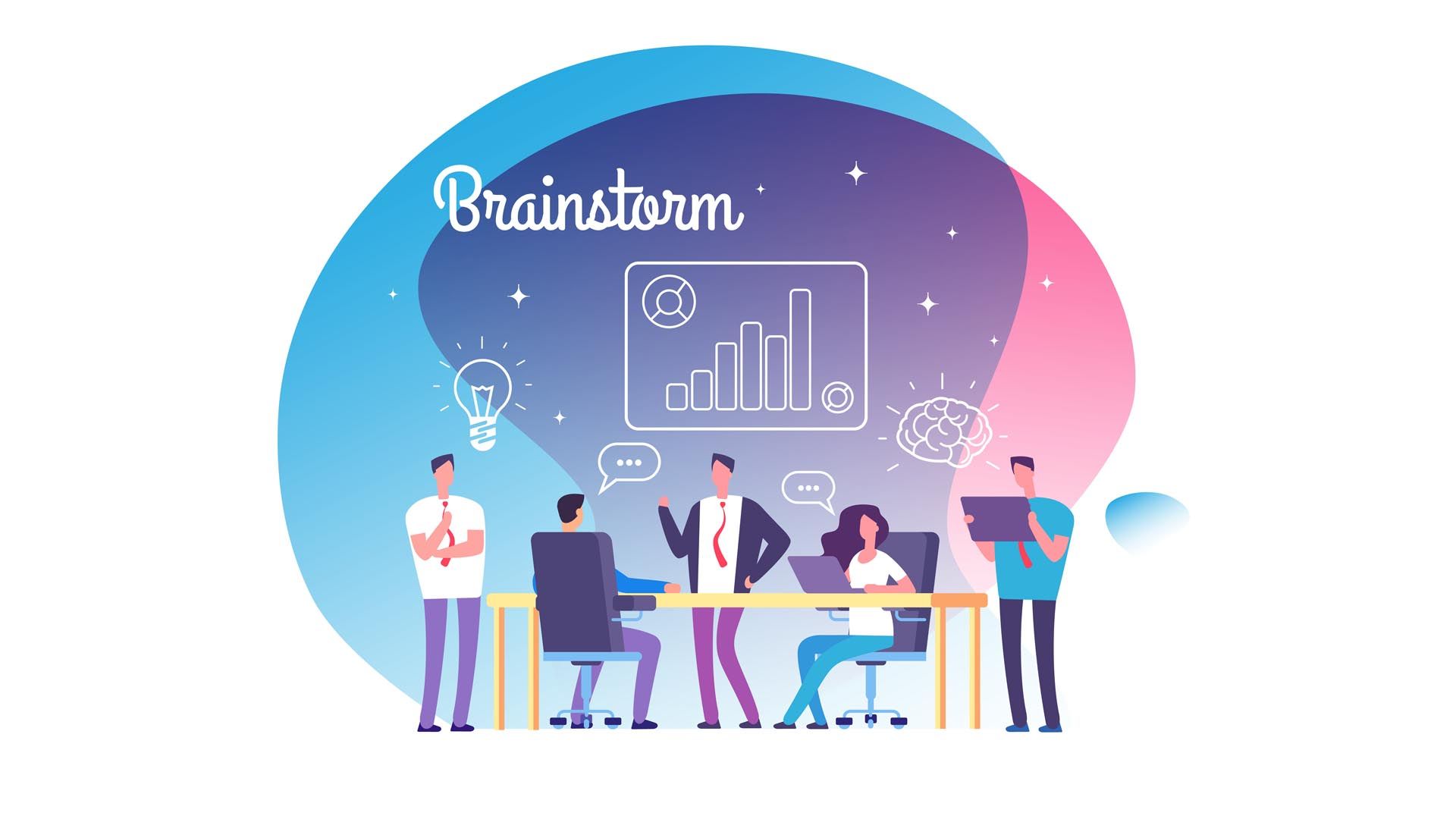There are many types of brainstorming. However, it is difficult to know which one is best for you. Check out this definitive guide to select the best type of brainstorming.
Contents
Brainstorming meaning
Richard Branson had said that we should source ideas from more than one person. That is to say, it is beneficial to brainstorm. There is a higher chance that we will come up with a strategic solution for our business problems.
We can come up with solutions to problems by brainstorming. The facilitator hosts the session. The participants take turns to suggest ideas. Someone jots down these ideas. During this process, it is important to encourage as many ideas as possible. We need to welcome even absurd and wild ideas. This is important to unleash creativity.
Why brainstorm?
“No problem can withstand the assault of sustained thinking.”
—Voltaire
This technique is very useful in idea generation. The genesis of brainstorming was in the ad world. It is very difficult to create lots of ideas. Above all, even the most creative people find it impossible to come up with ‘killer ideas.’ People brainstorm to come up with a large quantity of ideas. After that, it is easier to narrow down to quality ideas.
Here are some benefits of brainstorming:
- Encourages new ideas
- Releases creative and novel solutions
- Higher engagement than other team activities like meeting and presentations
- Higher satisfaction in team members
- People are more motivated to work on ideas they helped generate
- It does not require expensive software.

3 major types of brainstorming
- Verbal brainstorming – Osborne developed this method in 1957. The team gathers and pitches their ideas verbally. Certainly, it is a simple and frugal method.
- Nominal group technique – It builds upon the verbal brainstorming. Consequently, it has extra steps related to voting and evaluation of ideas. You can read more about NGT in our other article on brainstorming in project management.
- Electronic brainstorming – Research shows that it is not as effective as verbal brainstorming. However, remote teams can only rely on e-brainstorming. Especially during situations like Covid19, it is critical to use this type of brainstorming technique.
1. Verbal Brainstorming Technique
All brainstorming techniques trace their origin to the book ‘Applied Imagination.‘ It was written by Osborn and published in 1957. Since then people have adapted it to different types of brainstorming. There is no official rulebook for brainstorming. However, interested readers can refer to this book. We have shared the referral link below:
| Amazon USA | Amazon India |
However, there are some common steps. We have highlighted these steps below:
Step 1 : Preparation and Invitation
- The host prepares the agenda or topic.
- Then they invite hosts to brainstorm over the topic
Step 2: Welcoming the team for brainstorming
- The host introduces the brainstorming team to one-another.
- After that they announce the basic rules. For example, ideas like ‘all ideas are welcome,’ ‘no criticism is allowed,’ and ‘people can skip their turn if nothing comes to their mind.’
- If anyone wants to suggest an idea out of turn they can raise their hands.
- They debrief the team about the objective, problem, and the limitations
Step 3: Idea generation
- In the initial stage, the participants are asked to suggest solutions to the problem
- All the points are carefully noted down.
- The host ensures that all ideas are encouraged.
- Once a sufficient number of ideas are listed, the ideas are summarized by the host.
- People can suggest some more ideas if anything comes to mind.
Step 4: Idea analysis and filtration
- After the summary, the host asks for feedback on ideas one by one.
- Ideas are judged by all the team members based on their feasibility.
- Non-feasible ideas are removed from the list.
- Finally, the team members are thanked. The session is closed.
2. Nominal Group Technique

The Nominal Group Technique(NGT) or Nominal Group Brainstorming(NGB) is also one of the types of brainstorming techniques. It may seem difficult at first. However, it is worth the extra steps. The results are robust and accurate. As a result, it is better than verbal brainstorming. Step 1 is the same as the verbal one. Next set of steps are highlighted below:
Step 2 : Welcoming and debriefing the team
- The host welcomes all the team members. Team spirit is an important part of success. Therefore, a jovial and positive atmosphere is created.
- The participants are briefed about the rules.
Step 3: Idea generation
- Ideas have to be individually written down on a paper or typed into a Word document.
- This is how it is different from the conventional technique where we brainstorm verbally.
- Some person collects and collates the idea.
Step 4: Sorting of ideas
- The host reads the ideas aloud, one by one.
- The participants then discuss the ideas. Firstly, the focus is on finding redundant ideas. Duplicate ideas are removed. Ideas that can be clubbed together are combined.
- Secondly, after removing the duplicates, ideas are grouped. Similar ideas are grouped into a set.
- Till this stage the ideas need not be judged individually.
Step 5: Ranking of ideas
- The team members then rank these ideas privately.
- Each person can give a rating to the ideas from say 1 to 10. 1 can be assigned to a horrible idea while 10 can be assigned to the best idea.
- The host collects the ranking sheet and adds up the total for all ideas.
- The ideas with highest totals are shortlisted.
- It is as per the discretion of the host. Usually top 3 ideas are chosen
Step 6: Discussion of the top ideas
- The top ideas are discussed.
- The participants talk about the pros and cons. They also discuss the probable issues and solutions for each idea.
- Once a consensus is reached, the top idea or set of ideas is chosen.
- Usually more than one idea is chosen as it may require external consent. Otherwise, the best idea is chosen.
3. Electronic Brainstorming

In this technique the participants interact with each other using a device. Modern e-brainstorming software supports the use of smartphones, tablets, and computers. As a result, among the different types of brainstorming this provides the most flexibility of time. Here too the first step is similar.
Step 2: Invitation to join
- The host sends out an email invitation.
- The email contains general guidelines and links.
- Sometimes, participants have to install the required software.
Step 3: Idea generation and analysis
- The ideas are typed by the participants.
- These ideas are collected together and displayed to the team members.
Step 4: Idea analysis
- The ideas are then discussed by virtual meeting software like Zoom or WebEx.
- The host may decide to keep the analysis style as verbal or NGT.
- If the analysis is done by NGT, then there are rounds of voting and analysis of ideas.
Once the idea analysis is complete, thank you mail is sent. You can learn more about managing virtual teams from our other articles. People are more skeptical about this type of brainstorming technique. Therefore, managing emotional intelligence in virtual teams is also a big challenge.
How to choose between the types of brainstorming?
The best type of brainstorming technique depends on many factors. Firstly, when the team is remote, e-brainstorming is the only option. Meanwhile, you can check our article on managing remote teams effectively. Secondly, it also depends on whether the speed is critical. NGT typically takes longer than verbal. Thirdly, it also depends on the specific comfort level of the team. Fourthly, it also depends on the budget and resources.
There are three main types of brainstorming:
1. Verbal Brainstorming
2. Nominal Group Technique
3. Electronic Brainstorming
The users can remain anonymous while they brainstorm electronically. Secondly, it is extremely useful for very large groups. Managing the brainstorming activity for such groups is very difficult without use of software. Thirdly, it is also beneficial for people with social anxiety. Such people find it easier to share ideas when they are not directly interacting with other people.
Firstly, the participants don’t discuss the ideas. Therefore, they cannot build upon other people’s ideas. Generally an idea that has seen two to three updations from other members gets polished. Secondly, anonymously collected ideas can lead to social loafing. Participants can submit trivial ideas without giving too much thought about their quality.
Research shows that electronic brainstorming can lead to lower ‘group wellbeing’ and ‘member support.’

5 thoughts on “3 types of brainstorming: which is best for you?”